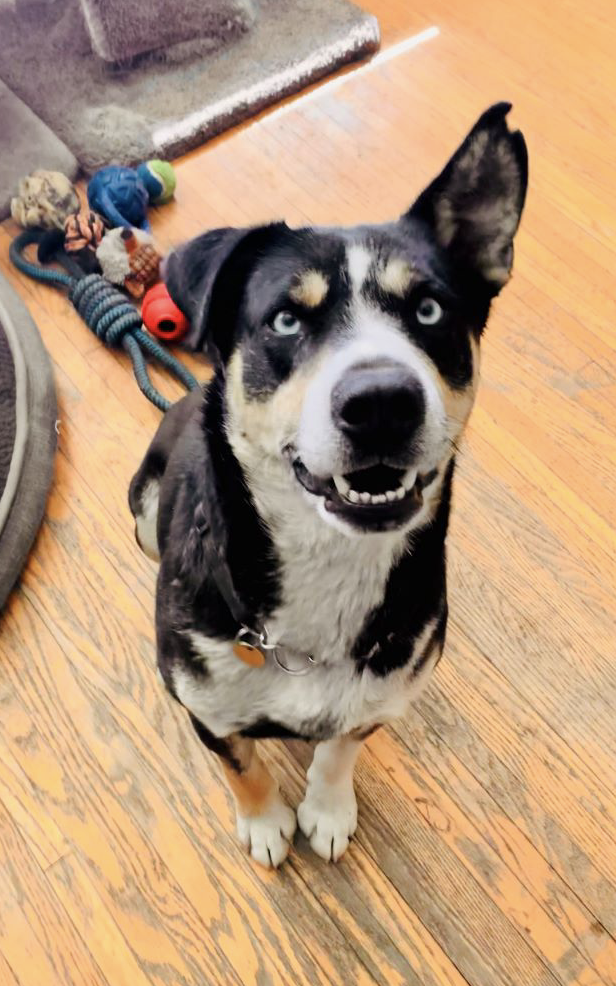The word “parvo” may seem harmless to the average person, but to anyone working with animals, it’s synonymous with “definite cause for concern”. Parvo is a highly contagious virus that causes an infectious gastrointestinal illness in puppies generally, but also often in young dogs. It’s dangerous not only because without treatment, it can potentially be deadly, but also because it spreads with great ease through a canine population and it can live for a very long time in its environment.
According to Cornell University’s College of Veterinary Medicine, canine parvovirus type 2 (CPV) started emerging in dogs in Europe around 1976, and in only two years, it had spread to the point of causing a “worldwide epidemic of myocarditis and inflammation in the intestines”. Interestingly enough, it is closely related to the feline panleukopenia virus (FPV). As a matter of fact, there’s actually a chance that parvo is a result of a few genetic mutations in FPV. Generally, the intestinal tract and bone marrow are the most affected. As I also mentioned, it primarily affects puppies and young dogs, but it has been known to also affect older dogs too, especially if they’re unvaccinated.

In addition to puppies between six weeks and six months old as well as unvaccinated dogs being the most at risk, there are certain breeds that have been found to have an increased risk of contracting the virus. These breeds are:
- German Shepherds
- Rottweilers
- Doberman Pinschers
- English Springer Spaniels
- American Staffordshire Terriers
Generally, parvo can be transmitted through direct contact through the nose and mouth with infected poop. This might seem odd, but keeping in mind that dogs and especially puppies are extremely curious animals whose worlds revolve around smelling new scents and licking or chewing things, it’s very common for disease to spread this way. Parvo can also be spread through indirect contact, as the virus can unfortunately survive on a long list of things, including clothing, human skin, household surfaces, and even the ground. The virus is also resilient enough to survive outdoors for months, and potentially even years, in addition to being resistant to certain disinfectants. The disease can actually also spread to other canines, such as wolves and coyotes, but also other animals such as foxes, raccoons, and skunks.
Dogs infected typically appear lethargic or depressed, and they generally don’t have an appetite or much of a will to do anything they normally do. The most worrying signs are a high fever, vomiting, and diarrhea. In short, the virus begins to attack the tonsils or lymph nodes of the throat, and once there, it starts creating copies of itself and eventually it enters the bloodstream. From the bloodstream, it starts attacking rapidly dividing cells, “hitting hardest in the bone marrow and in the cells that line the walls of the small intestine”. The virus works to destroy the epithelium of the small intestine, which ultimately prevents the dog’s body from absorbing the necessary nutrients and the ability to protect itself from bacteria moving from the gut into the body. This ultimately leads to nausea and diarrhea, and will cause a widespread infection inside the body. Deaths from parvo are ultimately caused by severe dehydration and shock, but can also happen from the bacteria loose in the bloodstream after parvo has wreaked havoc on the epithelium. Typically, dogs can be in the hospital for five to seven days, and the highest risk of death occurs within 72 hours of first noticing symptoms, so it is absolutely crucial to act fast to avoid the survival rate from dropping from 75% to any lower.

Vets can usually administer tests to determine whether a dog has contracted parvo, and once a dog has confirmation of parvo, the gruelling recovery can begin. This generally entails a lot of supportive care, often with a hospital stay, to ensure fluids are monitored and nutrients are given to replace what has been lost. There are often medications that can be used to control nausea and diarrhea as well. Ultimately though, the best defence is prevention, and this is why the CPV vaccine is not to be considered an option, but a necessity. At AARCS, every dog gets the DA2PP vaccine, which is a combination vaccine meant to protect not only against parvo, but also against distemper, canine hepatitis, and parainfluenza.
Lastly, there is no need to worry about canine-to-human! We cannot get parvo from dogs, and vice versa. However cats can become infected with canine parvo, though with more mild symptoms.
Ultimately, parvo is something that can easily be avoided with proper vaccination, and though it can often lead to death, it is not always a death sentence.

Ioana Busuioc
Blog and Website Content Creator
Got ideas for our next blog? Email me at [email protected]!

